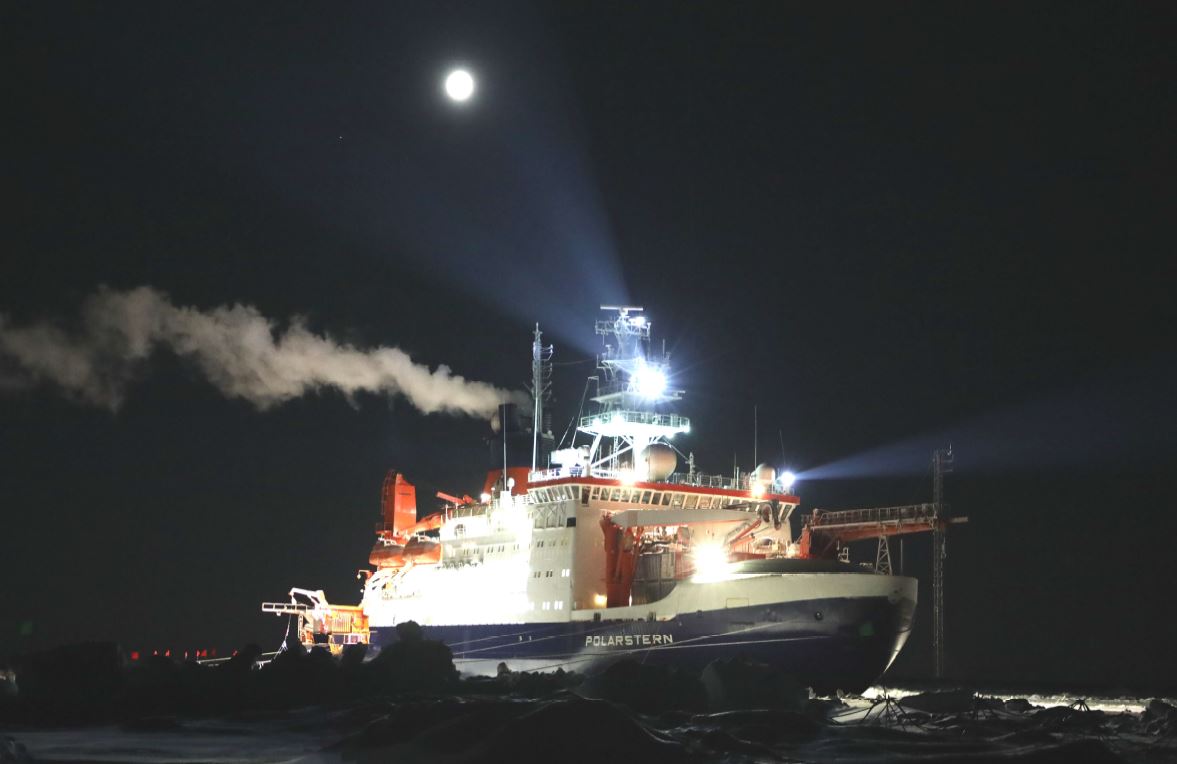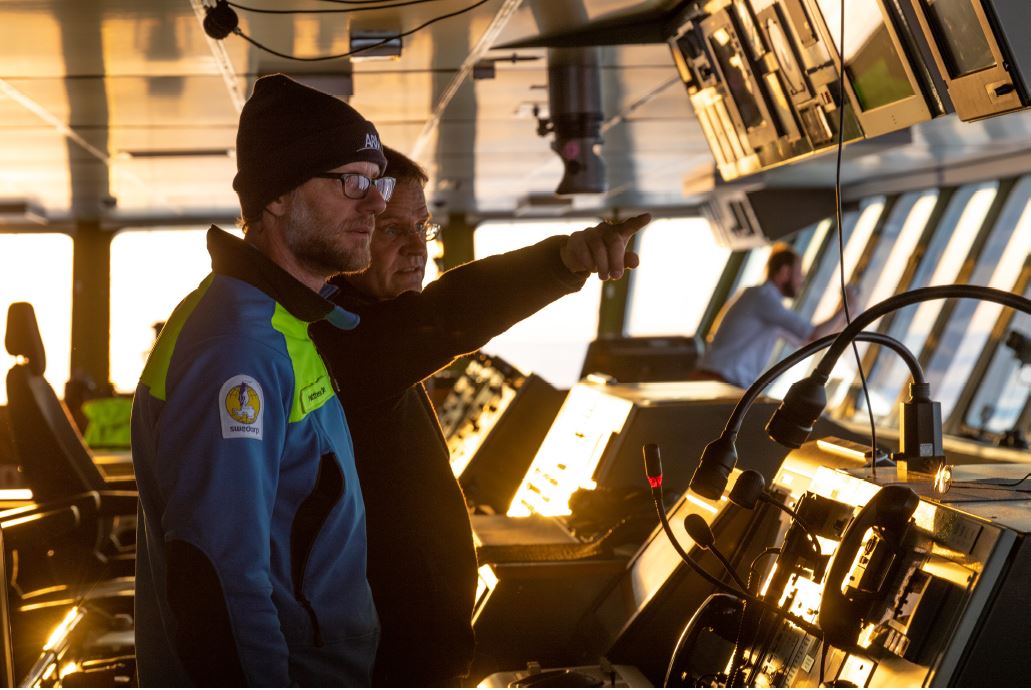MOSAiC PI Blog, Part 1: Frozen In and Facing the Arctic Head-On
Published: 21 January 2020
Editor’s note: Matthew Shupe, co-coordinator for the 2019–2020 Multidisciplinary Drifting Observatory for the Study of Arctic Climate (MOSAiC) expedition, sent back an update after the first leg.

Season’s greetings. I’m sitting here, somewhat in purgatory, on the Kapitan Dranitsyn icebreaker heading back from MOSAiC Leg 1, and I wanted to write a brief summary to provide you all with some of my PI perspectives from the last couple of months.
First off, I cannot believe that Leg 1 is already finished. It seems to have flown by so fast. This is likely because it was a tremendous amount of work to get everything established, and in many cases re-established, and to keep things running. We knew it would be a challenge, and the Arctic did not disappoint in that regard!
I do have a few topics to cover here, and I’ll try to break them down into digestible sections.
Conditions
The weather conditions during Leg 1 were pretty typical of the Arctic as I know it: some nice wind/storm events, some nice stratiform mixed-phase clouds. Thus, it seems to me that we are getting a representative data set in that regard.
The sea ice was overall thinner than anticipated, although apparently representative of the new Arctic! Most of the ice at install was comprised of a skeletal structure that was about 60‒90 centimeters thick holding together ice floes that were formerly 60‒70 percent covered in melt ponds. Most of these melt ponds had melted through (i.e., open ocean below) but had now frozen over to be about 30 centimeters thick. So it was kind of Swiss cheese ice that was starting to freeze again. It turns out (apparently) that this ice is weaker than the thicker ice of the past and tends to break more easily!
We experienced all kinds of cracks through and around our central observatory at MOSAiC. Most of these were just interesting to see, but a few of them would take out the power line to our equipment on the ice or threaten installations. The biggest threat to ARM equipment was a crack under one leg of the GNDRAD (ground radiation) swing set, but we were able to move it, and the cracks are now all refrozen and stable.

Instrument Installation
From my perspective, the ARM suite installation went very well. As usual, ARM is always so prepared. Having already done multiple ship visits, a full beta test at LANL (Los Alamos National Laboratory), and the field-test setup on the pier in Tromsø, Norway, it was obvious that things were pretty much ready for install when it was finally time. I know this field preparation takes a lot of time and resources, but it really does seem to pay off when it comes to getting instruments running in the field.
The ARM suite was ready very quickly after arrival in the ice, and this is important for getting us as long a data set as possible. The installation on the ice out at Met City took a bit longer, but I think we’ve arrived at a pretty good state there as well.
Coming up next: Shupe talks more about the ARM team’s role during MOSAiC.
# # #
MOSAiC is an international arctic research expedition led by the Alfred Wegener Institute with U.S. contributions from the U.S. Department of Energy, National Science Foundation, National Oceanic and Atmospheric Administration, and NASA.
Keep up with the Atmospheric Observer
Updates on ARM news, events, and opportunities delivered to your inbox
ARM User Profile
ARM welcomes users from all institutions and nations. A free ARM user account is needed to access ARM data.


















